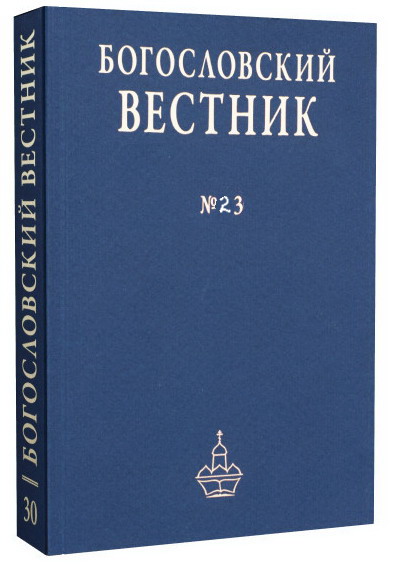The terms οὐσία and φύσις and the teaching on the “double consubstantiality” of Christ in the theology of John of Caesarea and Severus of Antioch
Keywords:
John of Caesarea the Grammarian, Severus of Antioch, Gregory the Theologian, Cyril of Alexandria, nature, essence, hypostasis, person, Trinity, Christ, Christology, theology, Triadology, common, particular, individual, consubstantialAbstract
The publication explores on of the problem aspects of the polemic between the followers of the Council of Chalcedon and its opponents concerning the understanding of the term “nature” and “essence”. In the IV century, thanks to the efforts of the first two Ecumenical councils and especially the Cappadocian Fathers the categories of the “common” and “particular” received their precise definitions. Closer to the end of the IV century these categories were uniquely used for expressing the category of “common” existence as opposed to “hypostasis” and “person”. After the Council of Chalcedon (451), during the polemic about the teaching of the “two natures” of Christ, the opponents of Chalcedon, to explain their monophysite teaching on the incarnation, invented a new interpretation of the category of “common” and “particular”. IT was Severus of Antioch who was it inventor, however is founded his ideas in an older tradition, which was based on the authority of Sts. Gregory the Theologian and Cyril of Alexandria. According to Severus the term “nature” must change its meaning of “common” and be used as a category of the “particular”, if one was to talk about the incarnation of the Son of God, while the term “essence” must express the abstract essence of the divine and humanity, having lost its connection with “nature”. Such a stance was necessitated by a resistance to accept two natures in Christ after the incarnation. This lead to controversies in the Trinitarian doctrine, which was always regarded be the Church Fathers as inseparable from the teaching of the incarnation. Severus’ adversary, the Chalcedonite John of Caesarea the Grammarian, juxtaposed Severus and the traditional understanding of Cappadocian terminology, together with the teachings of St. Cyril of Alexandria and the Council of Chalcedon.
Downloads
References
Болотов В. В. Лекции по истории древней Церкви. СПб., 1994. Т. 4.
Давыденков О., иер. Христологическая система Севира Антиохийского. М., 2007.
Мейендорф Иоанн, прот. Иисус Христос в восточном православном богословии / Пер. иер. Олег Давыденков, примеч. А. И. Сидоров. М., 2000.
Lang U. Notes on John Philoponus and the Tritheist Controversy the sixth centuary // Oriens Christianus. 2001. Vol. 85. Р. 23-40.
Lang U. John of Philoponus and the controversies over Chalcedon in the sixth centuary. A study and translation of the Arbiter. Louven, 2001.
Ebied R. Y., Van Roey A., Wickham L. R. Peter of Callinicum. Anti-Tritheist Dossier. Louven, 1981 (Orientalia Lovaniensia Analecta 10).
Uthemann K.-H. Difinizionen und Paradigmen in der Rezeption des Dogmas von Chakedon bis in die Zeit Kaiser Justinians // Chalkedon: Geschichte und Aktualität. Studien zur Rezeption der Christologischen Formel von Chalkedon. Leuven, 1997. S. 54-117.
A Collection of Letters of Severus of Antioch / Ed., transl. E. W. Brooks. Turnhout, 1973 (PO 12).
Антология восточно-христианской богословской мысли / Cост. Г. И. Беневич, Л. В. Бурлак. М. - СПб., 2009. Т. 2.
Downloads
Published
How to Cite
License

This work is licensed under a Creative Commons Attribution-NonCommercial 4.0 International License.








